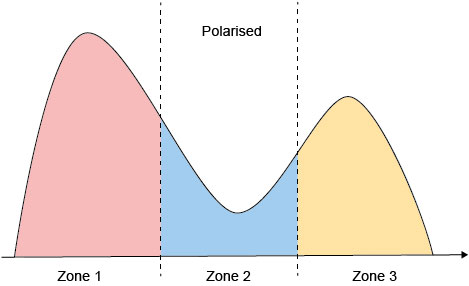6.1 Polarised training (or 80/20 training)
The ‘polarised’ model of TID suggests that 80% of an endurance athlete’s training time should be performed below the aerobic threshold in zone 1 (low to moderate intensity), and 15–20% should be spent in zone 3 (high intensity), above the anaerobic threshold (see Figure 6) (Fiskerstrand and Seiler, 2004). Many elite endurance athletes from multiple sports (rowing, running, cycling, swimming and skiing) have followed this periodised model of training (Seiler and Tønnessen, 2009) and have been highly successful. The low-intensity training enhances exercise economy, fuel utilisation and lactate threshold and the high-intensity training stimulates VO2 max and anaerobic capacity adaptations while reducing the risk of injury due to limited time at high intensity (Stöggl and Sperlich, 2014).
In contrast to the polarised model of training, the threshold model suggests that more beneficial endurance adaptations may be gained from training at moderate to high intensity in zone 2.

